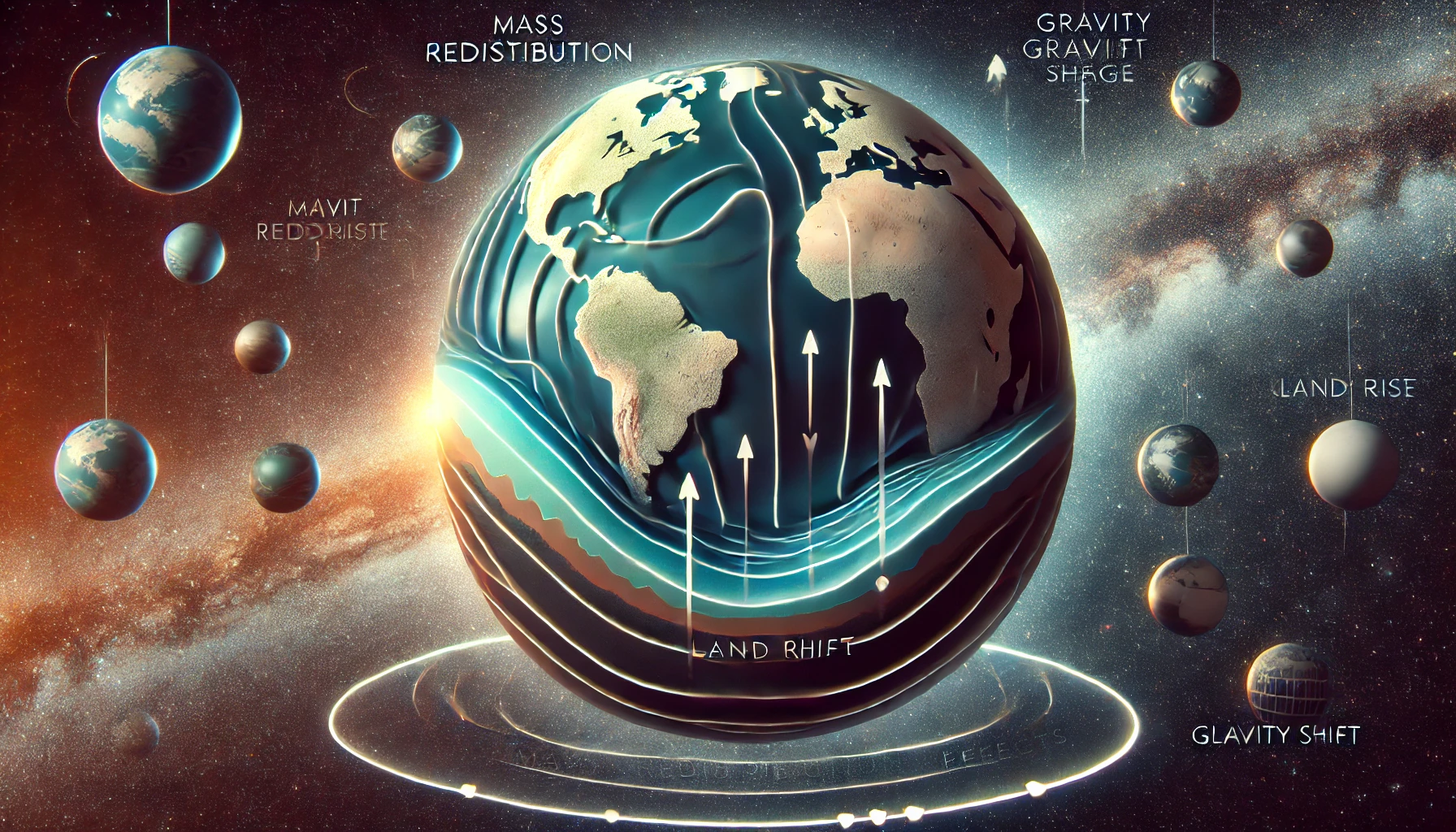In a fascinating display of Earth’s dynamic nature, the ground beneath Scandinavia is literally rising, causing measurable changes in the region’s gravitational field. Recent research from KTH Royal Institute of Technology has unveiled new insights into this remarkable phenomenon, known as post-glacial rebound. Let’s explore the science behind this geological uplift and its implications.
The Ice Age Legacy
Imagine pressing your hand into memory foam and then removing it – the foam slowly returns to its original shape. Something similar is happening in Scandinavia, but on a massive geological scale. During the last Ice Age, enormous glaciers pressed down on the Fennoscandinavian Peninsula (comprising Sweden, Norway, Finland, and part of Russia) for thousands of years. When these glaciers melted around 10,000 years ago, they left behind a compressed landmass that is still recovering today.
The Rising Land
The most striking aspect of this phenomenon is the rate of uplift:
- The land is rising by up to 1 centimeter per year
- This may seem slow, but in geological terms, it’s remarkably fast
- Over a human lifetime, this can amount to nearly a meter of elevation change
New Discoveries in Density and Gravity
The recent breakthrough by KTH researchers Mohammad Bagherbandi and Lars Sjöberg has revealed some surprising findings:
- Higher Density Than Expected
- The upper mantle beneath Scandinavia has a density of approximately 3,546 kilograms per cubic meter
- This is higher than previous estimates
- The denser landmass affects how the region responds to the ongoing rebound
- Gravity Shifts
- As the land rises, it causes measurable changes in the local gravitational field
- These changes can be detected using modern satellite technology
- The phenomenon provides a unique opportunity to study Earth’s geodynamics
Revolutionary Measurement Techniques
The KTH team’s innovative approach combines multiple data sources:
- Satellite remote sensing
- Terrestrial gravity measurements
- 3D positioning from GPS and other satellite systems
- Data from the GRACE satellite mission
This integrated approach provides unprecedented accuracy in measuring both the land’s rise and associated gravity changes.
Global Implications
The significance of this research extends far beyond Scandinavia:
- Climate Change Studies
- Helps in understanding sea-level changes
- Provides context for coastal planning
- Aids in climate model calibration
- Geological Understanding
- Improves our knowledge of Earth’s structure
- Helps predict geological changes
- Advances the field of geodesy
- Practical Applications
- Assists in infrastructure planning
- Helps in natural disaster preparation
- Contributes to global geodetic systems
A Similar Story in North America
The phenomenon isn’t unique to Scandinavia. Scientists are currently studying a similar effect across a larger region in North America, where the land is also rising due to post-glacial rebound. This parallel study provides valuable comparative data for understanding these geological processes globally.
Looking Forward
This research opens new avenues for understanding Earth’s dynamic nature:
- Improved tools for studying Earth’s geodynamics
- Better predictions of future geological changes
- Enhanced understanding of how our planet responds to long-term pressure changes
The rising of Scandinavia serves as a remarkable reminder that our planet is constantly changing, even if most of these changes occur too slowly for us to notice in our daily lives. Through advanced technology and innovative research methods, we’re gaining unprecedented insight into these gradual but significant geological processes.
Reference: SciTech Daily

